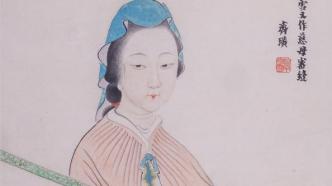

On July 13th, "Create a Landscape with Mind——Research Exhibition of Figure Paintings of Ming and Qing Dynasties Collected by Shanghai Academy of Chinese Painting" hosted by Shanghai Academy of Chinese Painting was held at Cheng Shifa Art Museum. / group, exhibiting works by Chen Hongshou, Hua Yan, Huang Shen, Gao Qipei, Luo Pin, Ren Bonian and other famous artists, involving portraiture, Gaoshi, ladies, Taoist and Buddhist figure paintings with different themes.
The Paper saw at the scene that some of the collections, such as Qi Baishi's "Lady Holding a Sword" and Huang Shen's "Painting of Zhong Kui", were rarely seen. The curator said, "It is worth noting that figure paintings in the Ming and Qing Dynasties returned to the scale of 'human beings', and painters paid more attention to personal and humanized expressions, and the painters can be seen from different figures. The life experience, family and country feelings, and the exploration and spiritual source in the face of the changes of the times."

exhibition site
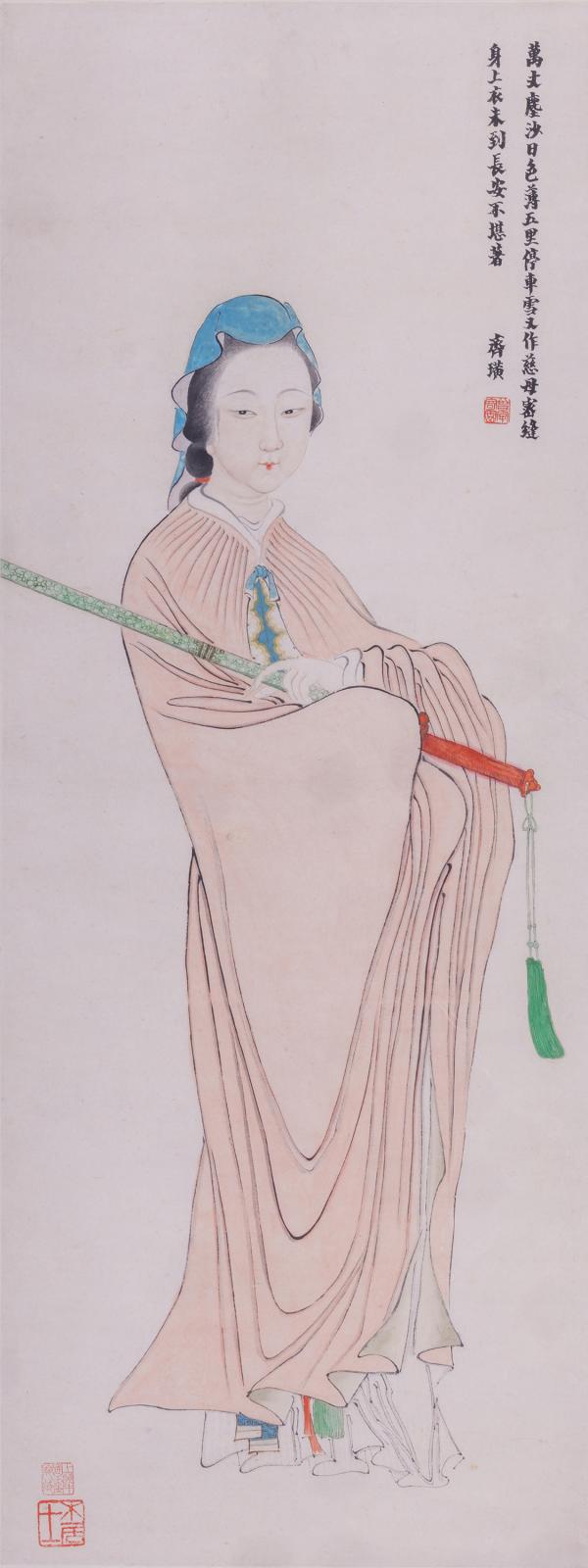
Qi Baishi "Lady Holding a Sword"
my country's figure painting has a long history, from the "Dragon and Phoenix Silk Painting of Figures" unearthed from the tomb of Chu in the Warring States period to the development of figure painting in the late Qing Dynasty, it can be said that it spans more than two thousand years, containing profound historical origins and cultural accumulation. During the more than two thousand years, due to the vigorous development of commerce, politics, economy, ideology and literature and art in the Ming and Qing Dynasties, figure painting, as one of the painting types expressing new concepts and ideas, has a direct or indirect vivid expression, and is also in keeping with the times. Keeping pace, embodies the memory of time and space, and embodies the style of the times.
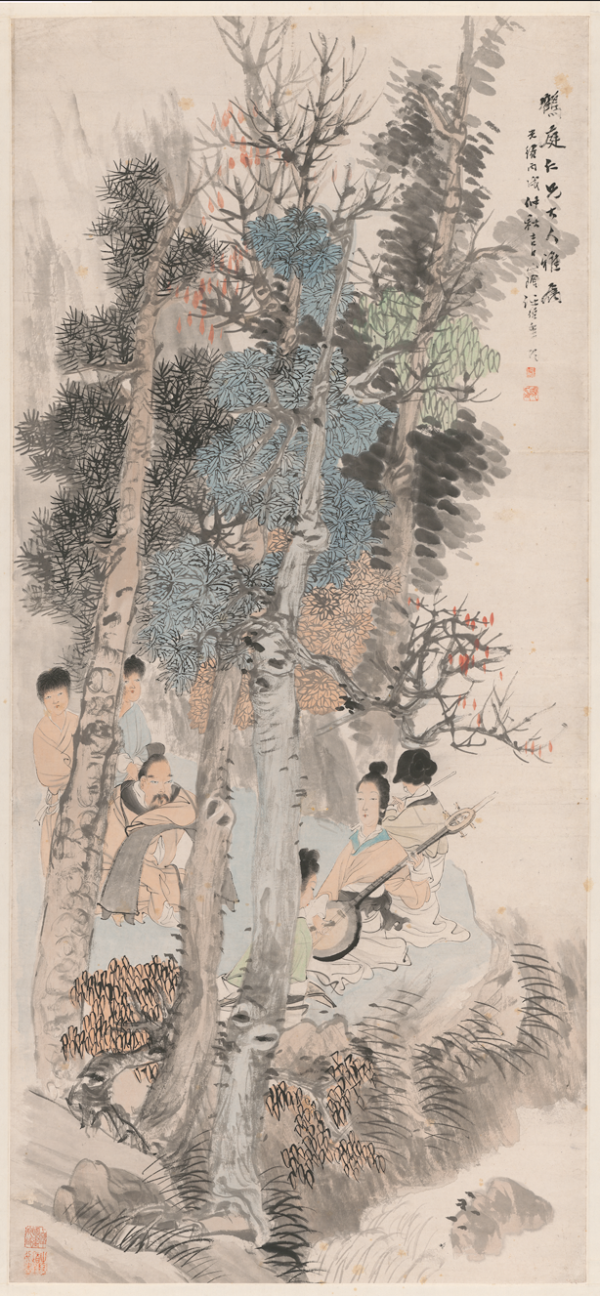
"Dongshan Sizhu" by Ren Yi
"Generally, when talking about Ming and Qing paintings, most of the attention is on landscapes, flowers and birds, and the achievements of figure painting are covered up. However, the development of figure painting in the Ming and Qing Dynasties has undergone a new turn and a meaningful breakthrough in the decline. , a group of unique and innovative figure painters and genres have emerged. For example, Zeng Jing, who is "like a shadow", Xu Wei, who is full of ink, Wen Zhengming, who is simple and elegant, Chen Hongshou, who is ancient and shocking, and full of personality. Representatives of the Eight Eccentrics of Yangzhou and the 'Three Rens' of the Shanghai School of Painting, which are both popular and refined." Liu Yuqian, the curator of the exhibition, introduced to The Paper, "It is very noteworthy that the figure paintings of the Ming and Qing Dynasties returned to the concept of 'people'. Painters pay more attention to personal and humanized expressions, and from different characters, we can see the painter's life experience, family and country feelings, as well as the exploration and spiritual source in the face of the changes of the times."
The theme of this exhibition is "Create a Realm with the Heart", and explore the Ming and Qing Dynasties from multiple perspectives, including the evolution of the origin, the situation of the times, painting techniques, and identity. The rich appearance presented by figure painting.

Zeng Jing, Zhang Chong "Portrait of Chen Yupu"
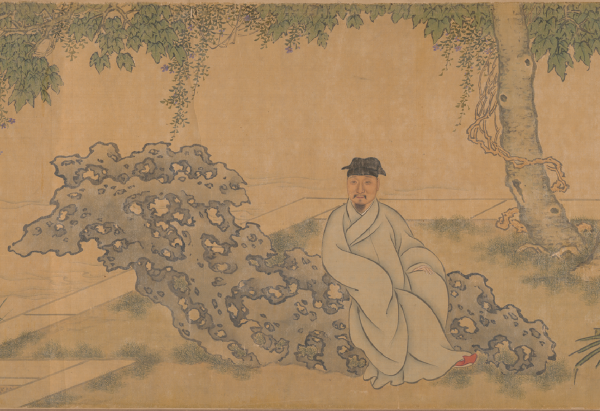
Part of "Portrait of Chen Yupu" by Zeng Jing and Zhang Chong
Works such as "Portrait of Chen Yupu", "Picture of Xuanxuan" and "Sketch of Qing Dynasty Characters" in the section of "Multiple Worlds" depict real characters in life from different angles, showing their living conditions and secular emotions. Among them, the figure in "Portrait of Chen Yupu" is sitting on a lake stone, dressed in elegant colors, bearded and smiling, calm and content, which is a portrayal of the literati's joyful and expressive feelings, and also a projection of the ideal state of the literati.

Ren Bonian's "Character Sketches in the Qing Dynasty"
In this section, Ren Bonian's "Character Sketches of the Qing Dynasty" and a group of old photos of bird walkers are very attractive. In the late Qing Dynasty and the Republic of China, people wearing long robes and "carrying birds with cages" could be seen everywhere on the street. At that time, raising birds was not only a kind of entertainment, but also a symbol of status and wealth. Ren Bonian's scroll depicts the image of a gentleman, holding a fan in one hand and a birdcage in the other.
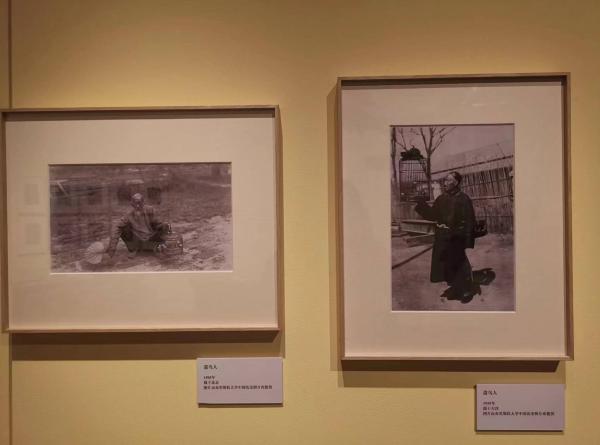
Old photo "Bird Walker"
The curator introduced to The Paper: "Uncle Ren was influenced by his father when he was young, and he practiced the painting technique of Molin. Later, he had contacts with Liu Dezhai, the director of Tushanwan Art Museum, and got involved in the modeling skills of Western sketching. You can compare the facial expressions and body postures of the characters in the old photos, and you can feel Ren Bonian's profound skills in figure painting and sketching. The characters in the paintings have smooth lines and both form and spirit."
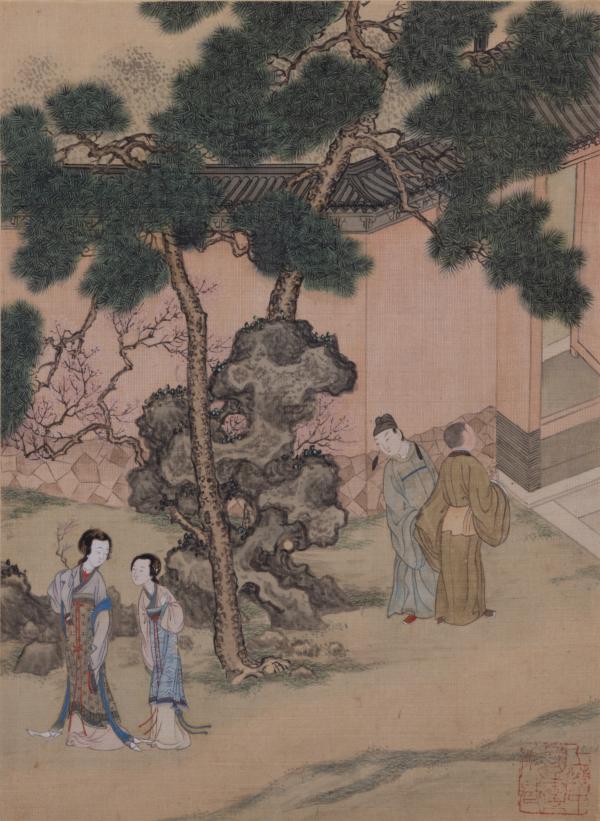
"Romance of the West Chamber·Stunning" by Jiang Tiao
During the Ming and Qing Dynasties, the publishing industry prospered and developed, ranging from operas and novels to books for imperial examinations. There are as many as dozens of illustrated versions of "The Romance of the West Chamber", a popular song version in the late Ming Dynasty. The exhibition exhibited the album "The Story of the West Chamber: Stunning" by Qing Dynasty painter Jiang Shi, which was exhibited for the first time. Painters of past dynasties have made great differences in shaping the image of Cui Yingying, which has changed with the change of public aesthetics, from slightly plump to advocating delicate images. Jiang Hao's painting style is exquisite and delicate, with vivid details. Painters use ideal female images to shape female images in literature. It can be said that the role of Cui Yingying embodies the transformation of the whole society's perception of female roles.
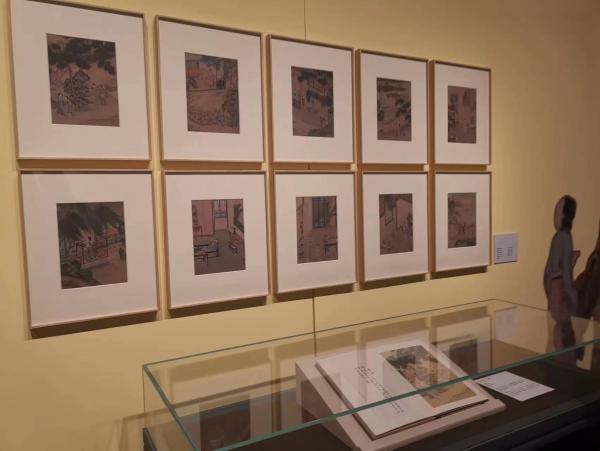
Exhibition site of Jiang Yu's album "Romance of the West Chamber: Stunning"
""The Atlas of Vagrants in the Rivers and Lakes" depicts the life scenes of the people at the bottom, "The Romance of the West Chamber" shows the life scenes of ladies through literary works, and "Sketch of Characters in the Qing Dynasty" depicts the leisure daily life of the squires. It is this secular life The diversity of Chinese figure painting has opened the way for the transformation and qualitative change of Chinese figure painting to modernity." said the curator.

Chen Hongshou "Picture of Hairpin Flowers and Sticks"
Gaoshi and ladies are the motifs of paintings that have existed since ancient times. In the section of "Making the New from the Past", you can read the different images of Ren Bonian, Chen Hongshou, and Hua Yan's paintings to feel how they inherited the past and brought forth the new. How to explore the traditional mystery, and find another way to innovate and express.
"Ren Bo joined the Taiping Army when he was young, and later sold paintings for a living in Shanghai. Although he and Chen Hongshou were separated by more than three hundred years, the two had the same fate. During the turbulent period, he naturally had a similar state of mind. When his early painting style was not yet formed, he started from Ren Xun and traced back to Chen Laolian. Introduction, "Huayan is unique among the 'Eight Eccentrics of Yangzhou', and has a style of elegance and elegance. Ren Bonian was deeply influenced by Huayan, not only in the different themes of figures, flowers and birds, and landscapes, but also in the moving artistic conception. As well as the freshness and elegance of the style, Hua Yan is his refuge. Especially the tree and stone techniques in his figure paintings and the creation of situations are simply the reproduction of the scenes in Hua Yan's figure paintings."
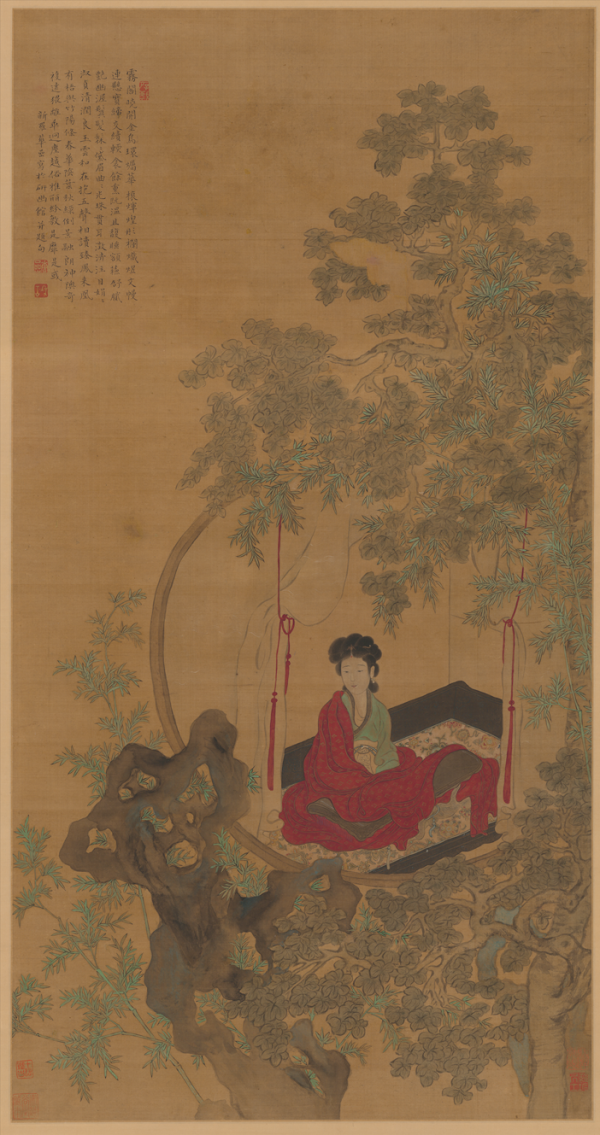
Hua Yan's "Handmaiden"
The exhibition also exhibited a rare painting of Qi Baishi's "Lady Holding a Sword". In the painting, the woman holds a sword with her arms around her arms, expresses affection with her eyebrows, and exudes a handsome and heroic spirit.
Although the proportion of dot scene characters in the painting is small, it is the finishing touch of the painting. In this section of "Zhiping Mountain Temple Picture", "Tea Tasting Picture", "Like Chibi Tour" and "Poet Loves Traveling", you can also appreciate the tourists who are boating on the Red Cliff in Xu Wei's paintings, and the people looking at the window in Wen Zhengming's paintings. A scholar, a poet who shakes his head and sings in Cheng Tinglu's paintings.

Gao Qipei's "Zhong Kui with the Sword"
During the Ming and Qing Dynasties, the three religions of Confucianism, Buddhism, and Taoism were harmoniously integrated. The old immortals, Taoists, and Buddhist figures were closely related to secular life, and they often served and responded to the people in a flexible and adaptable form. Immortal figures such as "Zhong Kui" and "Tieguai Li" in the "Daoshi Ruicai" section entrust the secular feelings and the inner expression of transcendence from the free and easy vertical and horizontal, pungent and powerful brushwork.
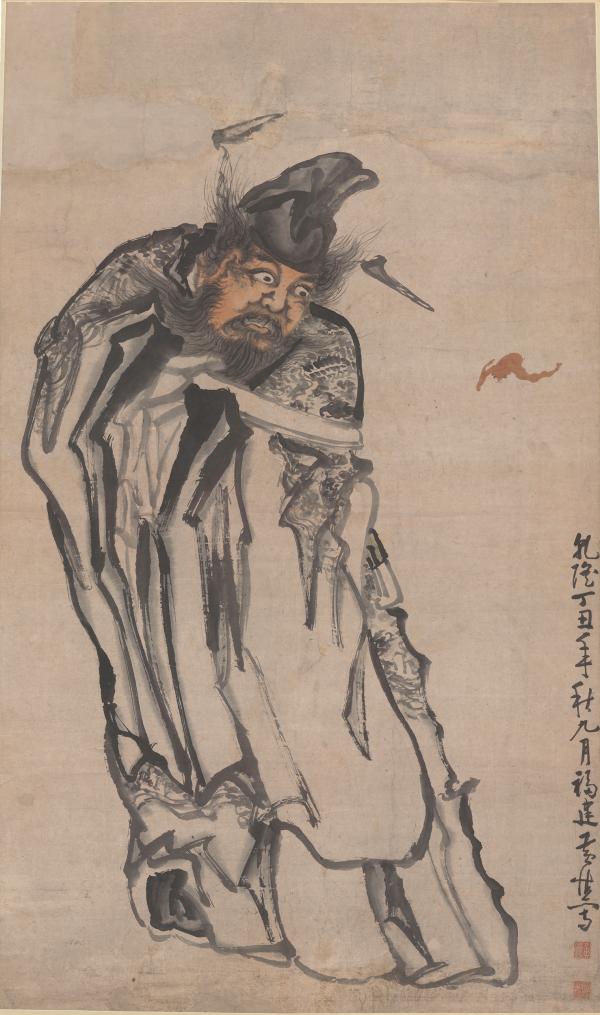
Huang Shen's "Zhong Kui Picture"
Zhong Kui is a Taoist deity who wards off evil spirits and eliminates disasters in Chinese folklore. He serves as a judge and can exorcise demons from houses. In the early days, the statue of Zhong Kui was hung on the occasion of saying goodbye to the old and ushering in the new. Later, it was changed to the Dragon Boat Festival, which has the meaning of exorcising evil spirits and praying for good fortune. Painters of all ages liked to paint this subject. The image of Zhong Kui was first recorded in the Wei and Jin Dynasties, and it was perfected in the Song and Yuan Dynasties. It was mainly used to catch and exorcise ghosts. In the Ming Dynasty, his main status was improved. Also more human. The creation of Zhongkui paintings in the Qing Dynasty reached its peak. The artistic image tended to be life-like, the artistic personality was prominent, the forms were also innovative, and the number of works far exceeded that of the previous generation, thus promoting the development of this theme.

Huang Shen's "Tieguai Li Tu"
Tieguai Li is a legendary Taoist god who ranks first among the Eight Immortals. He is also a microcosm of the poor people in real life. His image of a lame and ugly beggar is deeply rooted in the hearts of the people. Because of his human touch and superb mana, he is deeply loved by the people. During the Ming and Qing Dynasties, the painter adjusted the image of Tieguai Li, changing from a traditional and majestic religious image to an old man who is close to life, reflecting the trend of immortals becoming civilians and humanizing.
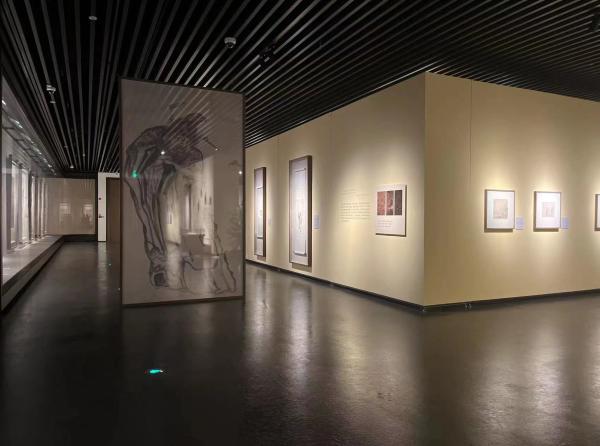
exhibition site

"Four Travels" literature
At the end of the exhibition, the documents of "Four Travels" are also displayed. "Four Journeys" is a collection of popular long novels of gods and demons in the Ming Dynasty. It describes the story of becoming a Buddha and an immortal, including "Journey to the East", "Journey to the West", "Journey to the South" and "Journey to the North". Among them, the imagination of the Eight Immortals and Tang Monk's study of Buddhist scriptures by apprentices and other themes are loved by the masses, and they have always been classic characters in folk New Year pictures and opera storytelling.
The Paper learned that the exhibition project was selected into the 2023 National Art Museum Young Curator Support Program, and the Shanghai Academy of Chinese Painting will also launch related lectures in succession to present the rich and colorful appearance of the exhibition in an all-round way.
The exhibition will last until October 18th.

